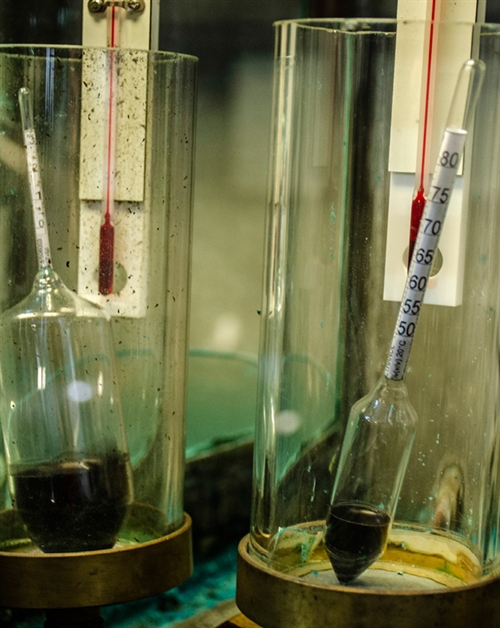Whisky at different percentages

By law, Scotch whisky must be bottled at a minimum of 40% alcohol. However, many whiskies are bottled at even higher percentages, and some even at full cask strength. In the following, we take a closer look at the reasons and the historical aspect.
If whisky is to be allowed to be called 'Scotch Whisky' at all, there are certain conditions it must meet. The spirit must be aged for a minimum of three years in casks no larger than 700 liters, it must be made from oak, and when bottled and sold, the alcohol content must be no less than 40%. The vast majority of more commercial whiskies are bottled at exactly 40% alcohol. This ensures the lowest possible spirits tax is paid in the various markets where the whisky is sold. However, this low alcohol, which is achieved by downgrading the whisky with water, has its weaknesses. Firstly, there is a greater risk of losing the more delicate, volatile top aromas the lower the percentage the whisky is bottled at. Secondly, there is a purely cosmetic risk of the whisky becoming "hazy" and cloudy when cold water or ice is added. The latter risk is mitigated by cold filtering the whisky. This filters a number of small particles (including oils) out of the liquid, which can then withstand both cold water and ice without becoming "cloudy". The process involves cooling the whisky to a low temperature (often around 0°) and then passing the liquid through a filter that collects the small particles. However, the process has the effect of taking even more flavor and aroma out of the whisky. To avoid cold filtration, and thus avoid removing the good flavor from the whisky, you can simply bottle the whisky at 46% or more. Then it won't "fog" at a low temperature or when ice is added (whoever thinks of that?). Therefore, you will find that that all good quality whiskey is bottled at min. 46% alcohol.
Cask Strength whisky is just the thing
Some producers, or individual products from different producers, are bottled at an even higher strength. In fact, more and more whiskies are coming onto the market that are bottled at full cask strength (Cask Strength), where the whisky has not been watered down at all. These whiskies typically contain the most flavor and aromatics. As Cask Strength whiskies will contain many oils, it can be beneficial to open the whisky in the glass with a single drop of water. But there are many opinions on this, and you should definitely drink your whisky as you think it is best.
But why is the limit 40%?
As mentioned earlier, Scotch whisky must be bottled at a minimum of 40%. But how is it that 40% has become the limit? Well, it has nothing to do with quality or taste, but is rather a random by-product of various historical coincidences. At the beginning of World War I, the whisky industry came under political pressure to contribute more to the national economy, and various measures were taken to squeeze more taxes out of the producers. At the same time, politicians were interested in reducing alcohol consumption in the military areas of the UK and in the areas of the country with the largest and densest populations. It's a period that Welsh Prime Minister David Lloyd George will be remembered for by the whisky industry. In 1915, while still Chancellor of the Exchequer, he set up the Central Control Board, which could introduce special legislation on the sale of alcohol, as well as advise on measures to reduce alcohol consumption in general.
Many more or less well thought-out proposals were put forward, leading to a power struggle between the government in London and the whisky producers in Scotland. At the time, most whisky was bottled at around 45-50% alcohol. In 1916, politicians wanted to lower the limit, this time to around 28% alcohol. The whisky industry protested again, and once again a compromise was reached that standardized the strength of whisky across the UK at 42.9%. A minimum price was also set. The restrictions and price controls were lifted at the end of the war, but in 1920, tariffs were raised again and whisky distilleries were ordered not to impose the increase on products. This increased financial burden meant that it was impossible for them to bottle any whisky above 40%, and thus the minimum strength was standardized, which was later set by law. The fact that distilleries were bottling at a higher strength before the war suggests that they understood that alcohol retains flavor and that by lowering the strength, they might make more money, but at the same time, the quality would suffer.